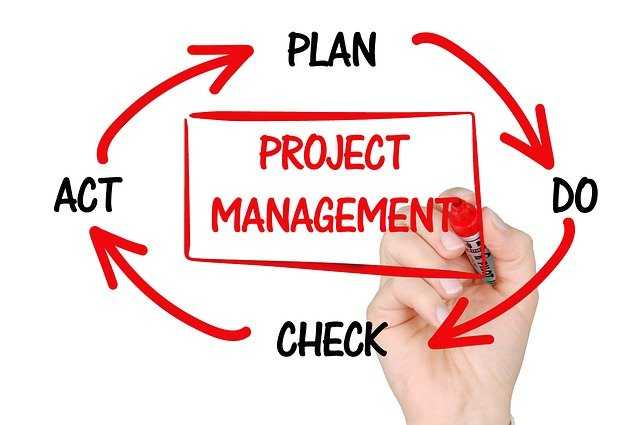Agile With Scrum In Project Management

Scrum is a project management framework that prescribes roles, events, artifacts, and rules/guidelines to implement that mindset. Agile is a mindset and philosophy that describes a set of principles in the Agile Manifesto.
In other words, Agile is a mindset, and Scrum is a framework for putting the agile philosophy into practice.
.jpg)
Scrum takes an iterative approach to project management, similar to other Agile frameworks.
The Scrum methodology recommends breaking down a project into sprints of one to four weeks in length. Each sprint comes to a close with the completion of a workable version or draft of the project's final deliverable.
The short iterations of the Scrum approach allow your team to deliver a working version of the final product on a regular basis.
Roles and Responsibilities in Scrum
Scrum was created with the help of a software model that outlines a set of roles, responsibilities, and meetings. It's adaptable enough to handle any complex project in any business intelligence environment.
To work on a Scrum project, you must first comprehend the three roles involved. These are the roles:
- The Owner of the Product
- The Scrum Master is the person in charge of the scrum team.
- The Scrum Group
Let's take a closer look at each of the roles, their responsibilities, and their responsibilities:
Scrum aims to maintain strong collaboration between people working on complex products, and it is constantly changing and adding details. It is founded on the systematic interactions of three key roles: Scrum Master, Product Owner, and Team.
- A project's Scrum Master is a pivotal figure. His primary responsibility is to remove any obstacles that may obstruct the team's ability to work effectively.
- The Product Owner, who is usually a customer or other stakeholder, is involved throughout the project, conveying the product's overall vision and providing timely feedback on the job done at the end of each sprint.
- The Scrum Team is a cross-functional, self-organizing group of individuals who are in charge of product implementation. In order to remain flexible and productive, it should have up to 7 team members.
.jpg)
Phases of Agile Principles
Scrum is based on Agile principles. The following five phases can be used to categorize this framework:
1. Initiate
This term refers to all of the steps involved in starting a project. Creating the project vision, identifying the Scrum Master and stakeholders, forming the Scrum Team, developing epics, creating a prioritized product backlog, and conducting release planning are all part of this process.
2. Plan and Estimate
This encompasses all processes related to task estimation and planning. It includes five steps: creating user stories, approving, estimating, and committing user stories, creating tasks, estimating tasks, and creating the sprint backlog.
3. Implementation
This phase focuses on the actual execution of the processes and tasks that go into making the project's final product. It entails the creation of deliverables, holding daily standup meetings, and grooming the product's prioritized backlog.
4. Review and Retrospect
This phase involves reviewing the deliverables as well as the work that has been completed, as well as determining methods to improve the project's practices. Convening Scrum of Scrums, demonstrating and validating sprint, and retrospect sprint are the three processes involved.
5. Release
The release phase is responsible for delivering the Accepted Deliverables to the client as well as documenting and internalizing the project's various lessons learned. It entails the delivery of deliverables as well as a review of the project.
.jpg)
Phases of Scrum (Events)
The Scrum development process can begin after the product backlog has been created. It is made up of a series of sprints, each of which is designed to complete a specific set of tasks. During a sprint, the Product Owner's job is to answer questions, accept user stories from the team, and determine when an increment is "done."
Each sprint is broken down into phases, known as Scrum events.
Sprint planning
The Scrum Master meets with the development team to plan the details of the upcoming sprint during the sprint planning session. Given their available time and resources, the team decides which high-priority items in the product backlog can be reasonably completed during the sprint. Individual team members are then assigned tasks.
Daily Scrum
This is a short daily meeting that lasts no more than 15 minutes. The daily Scrum is used to check in with other team members, assess the day's progress, discuss any issues, and plan the work for the following day.
Sprint review
A sprint review is a tune-up session that usually occurs on the final day of the sprint. It examines what went well, what went wrong, and what could be improved. Customers, managers, and other stakeholders are welcome to attend the sprint review and provide feedback on the "done" increments.
.jpg)
The Product Owner, Scrum Master, and development team attend the sprint retrospective, which is the final meeting at the end of a sprint. Participants discuss what improvements can be made and how to implement them in future sprints during the meeting.
Sprint
A sprint is a part of the development process in and of itself. It includes all of the work and events that occurred during the specified time period.
References:
Author Bio
Contributor comprises full-time and freelance writers that form an integral part of the Editorial team of Hubslides working on different stages of content writing and publishing with overall goals of enriching the readers' knowledge through research and publishing of quality content.
Article Comments
No Comments!
At present there are zero comments on this article.
Why not be the first to make a comment?
Similar Articles
Sponsor
Search Articles
Experts Column
Latest Articles
Featured Articles
Most Popular Articles












